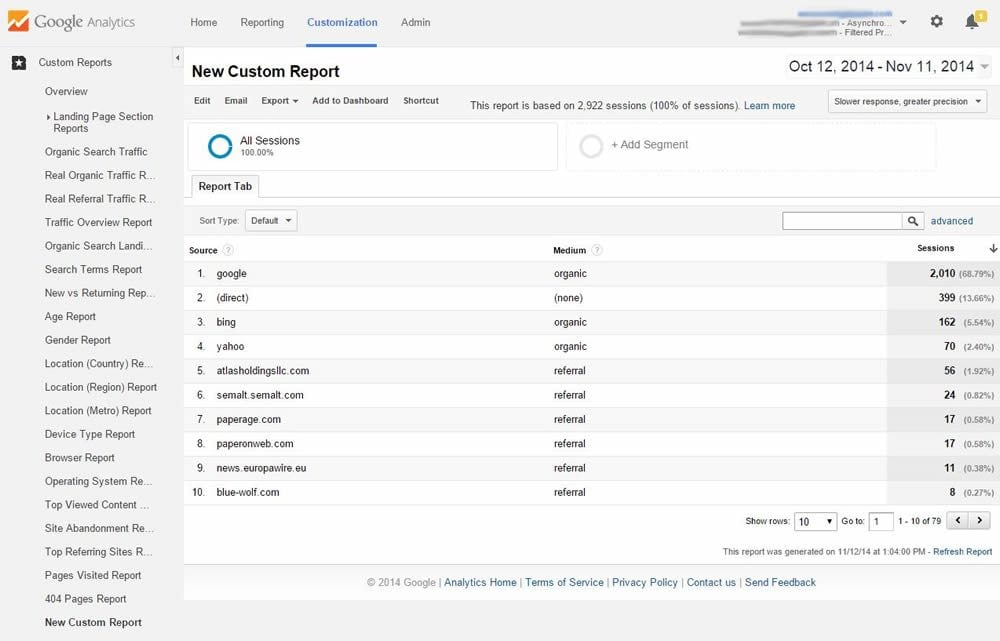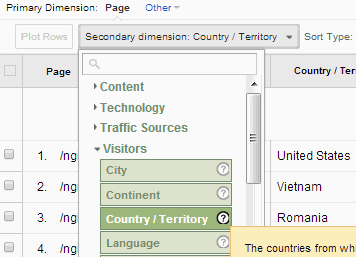Boost Your Data Analysis with Secondary Dimension in Google Analytics
Boost Your Data Analysis with Secondary Dimension in Google Analytics
Blog Article
Enhance Your Information Evaluation Utilizing Additional Measurement in Google Analytics
Checking out the capabilities of secondary measurements in Google Analytics opens a realm of possibilities for refining data analysis. The ability to study information even more past the surface area degree provides a nuanced sight that can shape critical decisions. By layering additional measurements onto key data collections, a more intricate story emerges, clarifying customer interactions and efficiency indications. This vibrant approach to information exam holds the essential to unlocking concealed patterns and trends that could change how businesses analyze their electronic impact.
Comprehending Additional Dimensions
In the world of information evaluation, a critical facet to understanding is the idea of secondary dimensions and their significance in extracting much deeper insights from Google Analytics reports. Additional measurements in Google Analytics refer to added criteria that can be added to the key measurement, enabling a more thorough analysis of data. By including second dimensions, analysts can section and filter information to uncover patterns, trends, and connections that may not appear when checking out the information overall. These secondary dimensions can offer context and a much more detailed understanding of customer actions, website traffic sources, and other essential metrics tracked by Google Analytics.

Advantages of Making Use Of Secondary Measurements
When analyzing information in Google Analytics, the usage of secondary dimensions supplies important understandings into individual behavior and performance metrics. By including a second dimension to your key data, you can delve deeper into the features of your website site visitors and their communications.
In addition, secondary dimensions assist in recognizing patterns and relationships that may not be quickly apparent when considering the information alone. This much deeper degree of evaluation can reveal important info that can assist advertising and marketing methods, website optimization, and overall organization decisions. Furthermore, secondary dimensions boost the context of your key information, offering a much more comprehensive sight of customer interaction and performance metrics. On the whole, using second dimensions in Google Analytics can substantially enhance the deepness and top quality of your information analysis, leading to even more educated decision-making and enhanced results.
How to Add Second Measurements
By incorporating second dimensions in Google Analytics, users can acquire deeper understandings into their information analysis procedure, enabling more detailed evaluation of customer actions and performance metrics. Adding additional dimensions is a simple procedure that can significantly enhance the deepness of analysis. To include a second measurement in Google Analytics, start by navigating to the record you wish to analyze. Once in the report, locate the "Additional dimension" tab over the data table. Click it to disclose a dropdown food selection with various choices such as Actions, Modern Technology, and Personalized Dimensions. Select the dimension you intend to include, such as 'Source/Medium' or 'Tool Group'. This second measurement will after that be put on your existing data, supplying additional context and enabling a much more in-depth evaluation of customer communications. By utilizing secondary measurements properly, users can discover beneficial understandings that might have otherwise been neglected, leading to educated decision-making and enhanced efficiency approaches.
Analyzing Data With Additional Measurements
Making use of second measurements in data evaluation gives a more extensive understanding of individual actions and efficiency metrics. By adding an additional dimension to your primary information set in Google Analytics, you can dive deeper right into the qualities of your site visitors and their communications. Integrating the primary measurement of 'source/medium' with the additional dimension of 'landing web page' can expose which particular web pages are drawing in web traffic from various sources, aiding you maximize these web pages for much better involvement.

Essentially, evaluating data with additional dimensions empowers you to get beneficial insights into user behavior, identify patterns, and make educated decisions to improve the efficiency of you can check here your digital properties.
Finest Practices for Secondary Measurements
In data analysis, integrating additional measurements successfully can considerably enhance the depth of understandings obtained from metrics and user behavior patterns. When making use of secondary measurements in Google Analytics or any various other logical device, it is important to stick to finest techniques to Going Here make certain the precision and importance of the information evaluation.
One key ideal technique is to meticulously select additional measurements that enhance the key measurement being analyzed. Selecting second measurements that provide extra context or more division can use a more thorough understanding of the data. It is also necessary to stay clear of overcomplicating the analysis by consisting of a lot of secondary dimensions, which might lead to confusion or dilution of insights.
Moreover, it is a good idea to trying out various mixes of main and second dimensions to reveal brand-new connections and trends. Regularly refining the option and reviewing of second measurements based on the certain goals of the evaluation can cause even more actionable insights. By following these best practices, information analysts can leverage second dimensions effectively to improve the general data evaluation procedure and decision-making capacities.

Final Thought
To conclude, including secondary dimensions in Google Analytics is crucial for a thorough information evaluation strategy. By leveraging secondary measurements along with primary ones, analysts and online marketers can discover beneficial understandings and connections that can notify decision-making and optimize electronic advertising and marketing approaches. Understanding how to properly use second dimensions and following finest techniques will allow specialists to draw out purposeful data and improve their overall performance metrics.
Additional measurements in Google Analytics refer to added criteria that can be added to the key dimension, my sources permitting for an extra thorough analysis of information. By incorporating second measurements, analysts can segment and filter data to uncover patterns, patterns, and relationships that could not be noticeable when looking at the information as a whole. Combining the primary dimension of 'source/medium' with the secondary dimension of 'touchdown web page' can reveal which details web pages are attracting web traffic from different sources, aiding you maximize these pages for far better interaction.
One trick best method is to very carefully select additional dimensions that match the main measurement being analyzed. By adhering to these ideal techniques, information analysts can take advantage of second measurements efficiently to enhance the overall information evaluation process and decision-making abilities.
Report this page